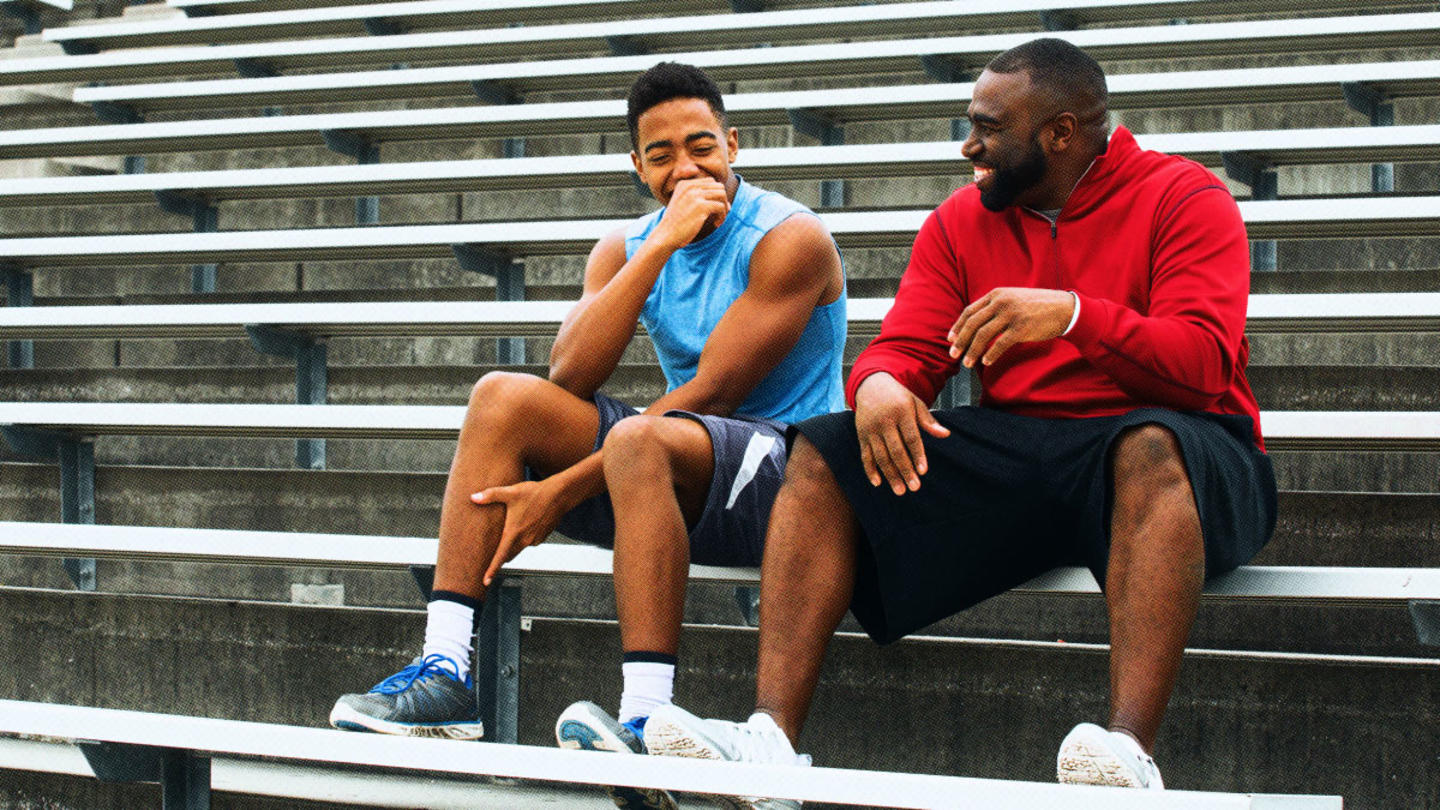“There is no such thing as other people’s children.” That’s the famous line by NBA star Bill Russell, and it is especially relevant today.
According to Harvard’s Center on the Developing Child, successful children growing up with challenges “had at least one stable and committed relationship with a supportive adult.” These children become thriving adults who are able to contribute to their communities.
This is the idea behind “mentorship,” a philosophy that pairs active, supportive adults with children who are underserved in various ways. The former helps to empower the latter, who in turn become strong leaders themselves.
“When you equip a child with what they need to thrive, then they’re able to give their gifts to society,” said Liz Murray, co-founder of The Arthur Project, an organization that matches mentors with middle schoolers. “You are unleashing the gifts that they have. It’s not, ‘They’re so lucky to have us,’ it’s, ‘We don’t want to miss out on what they have to offer.’”
Murray and other changemakers know the value of a good mentoring relationship in a child’s life. Below are four organizations ending generational poverty, criminal justice involvement, and substance use by focusing on one child, one teenager at a time. The Arthur Project focuses on the pivotal middle school years. Another organization starts as early as kindergarten; some stick with their children through high school graduation and beyond. The goal is always the same: Help young people feel their value as individuals and believe their happiness is worth working for.
The Arthur Project: Offering middle school students an expanding sense of self
Middle school is one of the hardest times in life for many children. It’s also an age many mentorship programs skip in favor of high schoolers. The focus on middle school sets The Arthur Project apart.
This is something Murray knows well. When she was in middle school, Murray was that child who needed help. Both her parents were addicted to drugs. Her situation was so bad that at times she went hungry. Her mother even tried to sell her sister’s coat to a drug dealer.
As life spiraled out of control, her neighbor, Arthur, attached himself to her side. With her mother in the hospital and her father in a homeless shelter, Arthur was the one teaching Murray to believe in herself. He encouraged her to stay in school and talked to the administrators as an advocate when she didn’t go. He was her one stable adult while she was bouncing through foster homes.
Arthur was in the process of adopting 15-year-old Murray when he died suddenly. It devastated her, but she never forgot his belief in her. “Arthur fostered a sense of, ‘This is not enough, and you have somewhere to be,’” she said.
Murray credits Arthur with her determination to finish high school while homeless, sleeping on the subway and park benches. His belief in her carried her all the way through college, and his influence continues to have repercussions in her life and the lives of middle schoolers she now mentors via her nonprofit, The Arthur Project.
In 2019, Murray told MENTOR National what she would say to Arthur if she could see him again. She would ask him, “How did you know? How did you know that at a time when I was about to give up on myself, when I could have gone this way instead of that way, how did you know to lean in the way that you did?”
The Arthur Project is named after Murray’s mentor during her tumultuous middle school years. The organization pairs New York City middle school students with social work interns who serve as dedicated mentors. The goal of every mentoring relationship is for the student to develop an expanding sense of self and the impact they can make in the world. They learn first that they matter to their mentor, then that they matter to themselves, and finally that they matter to the world and their choices and actions have impact.
More than 300 middle school students have been mentored in The Arthur Project with 100% of them re-enrolling after their first and second years in the program. Since joining the program, mentees report, among other things, that they feel like they matter, enjoy school more, have better relationships with peers and teachers, and solve problems more easily.
Most mentorship programs are created for high school students, but Murray knows how formative those middle school years can be. “Middle school is when children are solidifying, ‘Who am I?’” said Murray. “I’m of the belief that when you know who you are, that’s what tells you what’s possible.”
Sign up for the Strong & Safe Communities newsletter for stories, ideas, and advice from changemakers working with their neighbors to address the biggest problems we face.
HANDY: Mentors providing normalcy and stability for children in foster care
HANDY CEO Kirk Brown’s upbringing wasn’t that of your typical company executive. “I know what it feels like to kick the table so the roaches run from the food you have to eat,” says Brown, referring to the extreme poverty he experienced growing up in foster care. “I know what it feels like to be so hungry that you can’t even think.”
His life in foster care informs the work Brown does every day at HANDY (Helping Advance and Nurture the Development of Youth), a nonprofit that empowers Florida youth in foster care to live the life they want for themselves. Brown has never forgotten his own mentors. There was Ms. Jackson, who told him to become a giant because life handed him mountains, and Mr. Finley, who taught him that more education equals less hunger and that only his best was good enough.
HANDY’s founder, Ed Pudaloff, created the organization to provide children in foster care with normalcy and stability in their daily lives. Mentors build authentic, years-long relationships with their mentees. They fill the family roles that these foster youth are missing.
Brown tells the story of Karl as an example of the type of confidence HANDY instills in youth over the long term. When Karl graduated high school and decided to attend college, his HANDY mentors drove him to campus and helped him set up his dorm room. They even took a photo of his bed being made, because, as Brown said, “That’s the type of thing a family member would do.”
Four years later, when Karl graduated with a degree in civil engineering, one of his mentors offered him a job.
The foster youth that HANDY serves are exceeding expectations, with 90% graduating high school and 100% of those graduates going to college or technical school. In the same population nationwide, only 3% graduate college, but for HANDY scholars, it’s 70%.
“You can’t solve two generations of poverty with a six-month program,” said Brown. “We’re not a six-month program. We’re an ‘until you succeed’ program.”
Friends of the Children: More than a decade with one mentor — no matter what
When Friends of the Children alumnus Jimmy started in the program at eight years old, it seemed his future was already set in stone. For generations, every man in his family had gone to prison. After his father passed away when he was just two years old, he was raised by his grandparents in an environment fraught with drug use and mental health challenges.
Friends of the Children commits to children for their entire childhoods. Participants are under-resourced youth, children at risk for poverty, foster care, substance use, or other life-limiting challenges. The nonprofit provides a salaried professional mentor for each child from kindergarten to graduation — at least 12.5 years. This mentor is called a “Friend,” and they seek to break the cycle of poverty by filling the void of a strong, adult role model in each child’s life.
Friends build long-term relationships of trust. They give their children one-on-one attention, making them feel seen and important. They encourage their children to explore their interests and pursue big, achievable goals, providing guidance and support along the way.
This model has been working for nearly 30 years. While only 50% of participants’ parents graduated high school, 83% of Friends youth graduate, with 92% of those graduates going on to enroll in post-secondary education, serve our country, or enter the workforce. And even though 60% of parents are impacted by the criminal justice system, 93% of Friends youth avoid it altogether.
When Jimmy was introduced to John, his Friend, for the first time in his life, there was “an adult that’s there to listen to your dreams and wants and wishes.” John guided Jimmy through every aspect of life, including his relationships, school, home life, and dreams. He built up Jimmy’s confidence, allowing him to “be around other people and not feel different, regardless of my social status.”
Jimmy now works with a successful lawyer, advocating for other children in foster care just like him. The cycle he had been born into is officially broken. Without John’s presence in his life, he said, he would be addicted to drugs and most likely die young. “My kids will never have to experience that,” he said.
“The kids are the heroes. We are not some angels that come and help them do all these amazing things,” says National Program Director Spencer Hill. “We are trying to get them to see the greatness that is already inside of them.”
“Our history is showing that if you can intervene early in this child’s life, you have the ability to break the cycle for that child, sometimes for their family, their siblings, and for the generations to come,” says Friends of the Children CEO Terri Sorensen.
Thread: Many mentors create a village for each child
Poverty damages relationships and support systems — the social fabric — surrounding young adults, leaving them to fend for themselves in an unfriendly world. Thread, a nonprofit in Baltimore, Maryland, seeks to repair that fabric by pairing underserved Baltimore students with a multi-generational “Thread family.” The “immediate” Thread family is a small group of up to four volunteers who commit to providing personal and academic support for each student for 10 years starting in 9th grade. The “extended” Thread family is a web of up to eight “families,” including a “grandparent” that organizes the extended family. These volunteers also befriend the student’s actual friends and family, creating a social safety network that enables the student to succeed in high school and the years beyond.
“The 10-year period is critical because building trust and building trusting relationships takes a lot of time,” said Sarah Hemminger, co-founder and CEO of Thread. “You have to establish both that you are sincere, that you are competent, and that you are reliable.”
As a teenager, Donyae lost both his grandparents — his legal guardians — and quickly started slipping in school. It looked like he wasn’t going to graduate. But then his Thread family stepped in. Alexa, one of his mentors, rallied everyone that could help. She got his guidance counselor and his football coach involved. “Coach Nixon is saying, ‘If you continue like this, you’re not going to graduate,’” Alexa recounted. “Donyae turns that around and says, ‘I’m going to show you. I’m going to do it.’”
Not only did Donyae graduate, but he’s going to college. His Thread family will continue with him through college and beyond with at least six more years of mentoring. “What Thread is trying to do is help us find one another,” said Hemminger, “and begin to understand what someone else’s life is like and how ours is inextricably linked to theirs.”
Thousands of Thread volunteers have engaged more than 650 students, and 65% of those who have reached their fourth year in Thread have graduated high school.
“A healthy social fabric is made up of a diverse group of people who deeply understand themselves and one another,” says Hemminger. “The relationships in Thread are transformational, but they’re transformational for everyone involved.”
‘In this work, you can’t quit. You can’t stop.’
All it takes is one meaningful, stable relationship to impact a young person’s life. It may sound simple, but these relationships go through awkward phases just like any other.
When Alexa first tried to connect with Donyae, she said it was pretty clear he was trying to avoid her. “The first two and a half years were really hard. I mean, there were nine months when I did not even speak to him, didn’t see him,” she said. “I was trying to start a relationship, and it was not being reciprocated.”
But she kept at it. Eventually, Donyae recognized her persistence. “I appreciated it, actually,” he said, “because nobody else ever did that.”
“In this work, you can’t quit. You can’t stop,” Sorensen said. “You have to keep going back even though it’s hard or even though you take two steps back for every one step forward. But in the end, being relentless has helped our children be resilient.”
***
The Stand Together community partners with changemakers who are tackling the root causes of America’s biggest problems.
Learn more about Stand Together’s efforts to build strong and safe communities, and explore ways you can partner with us.
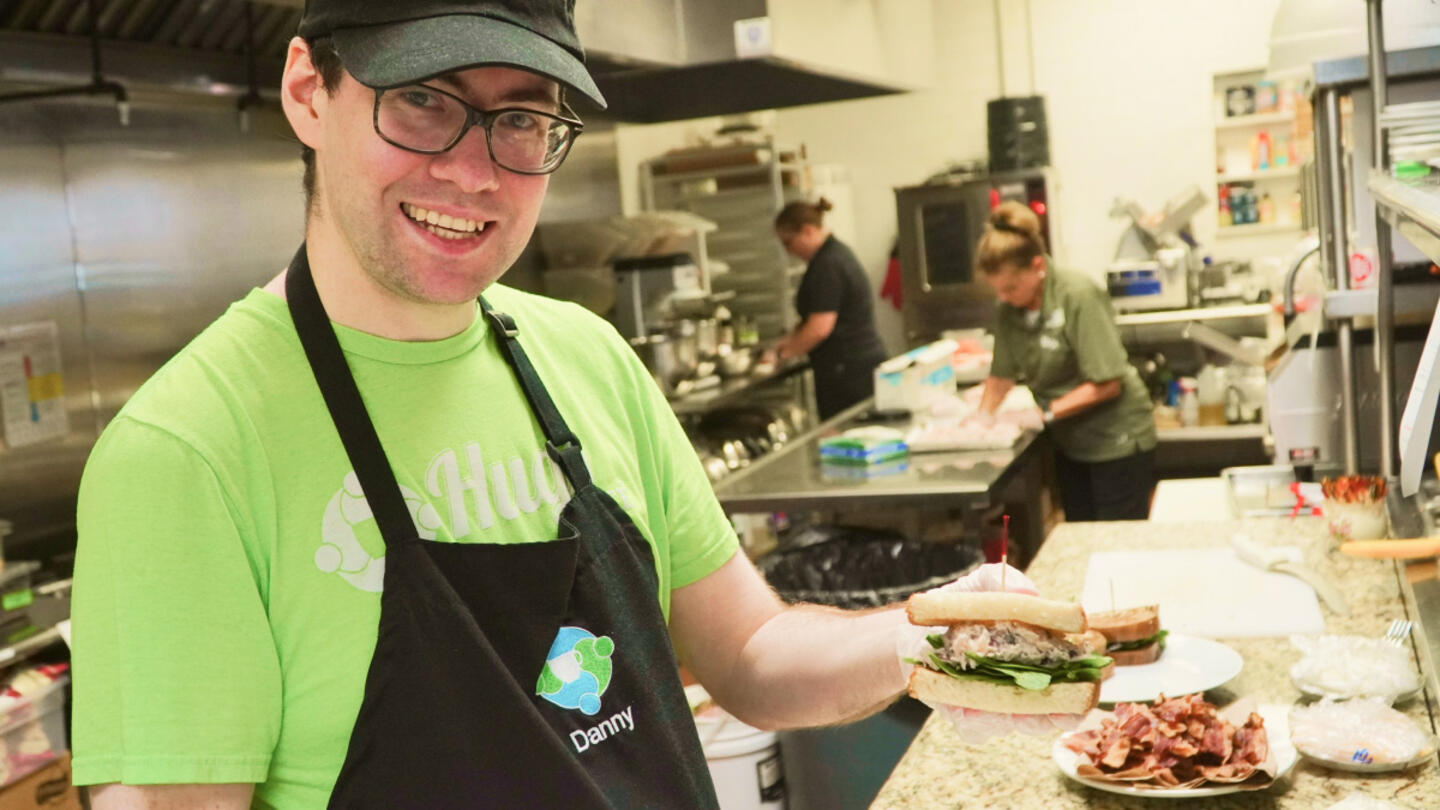
People with disabilities want meaningful work — and Hugs Cafe is making it happen.
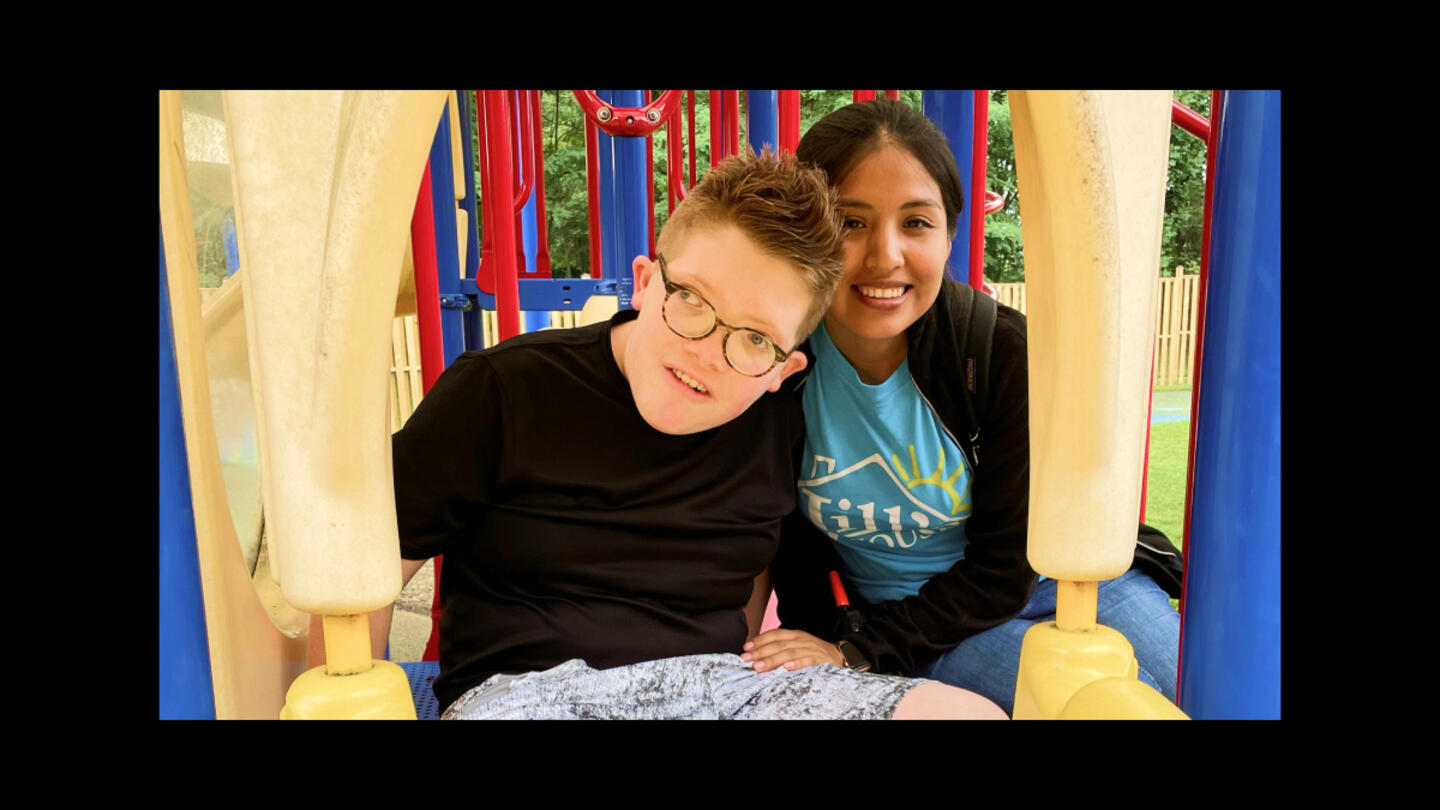
At this ‘resort,’ children with intellectual disabilities are seen as gifts to be celebrated and loved.
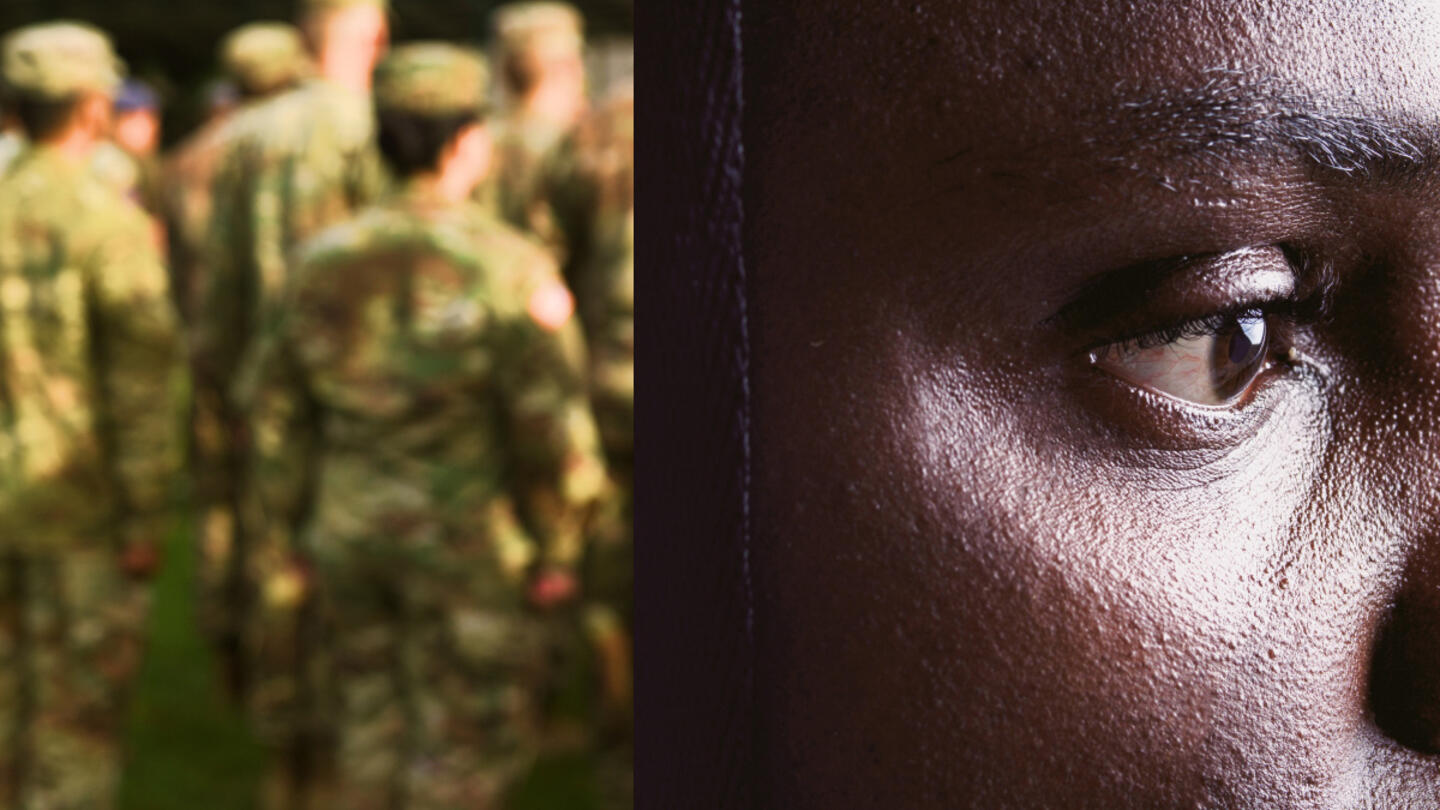
Veterans experience loss when leaving service. Could this be key to understanding their mental health?
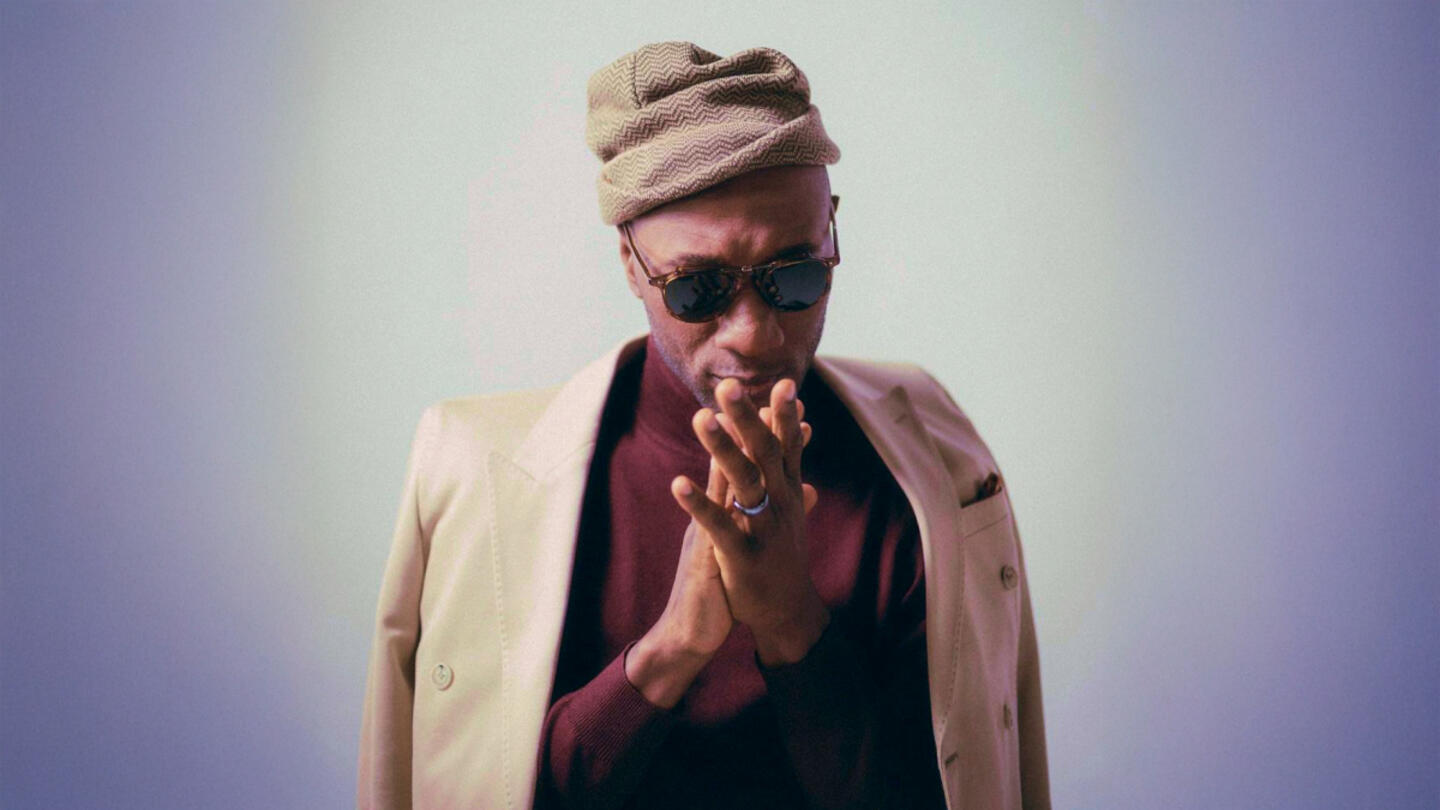
The Grammy-nominated artist is highlighting the stories we don’t get to hear every day.
